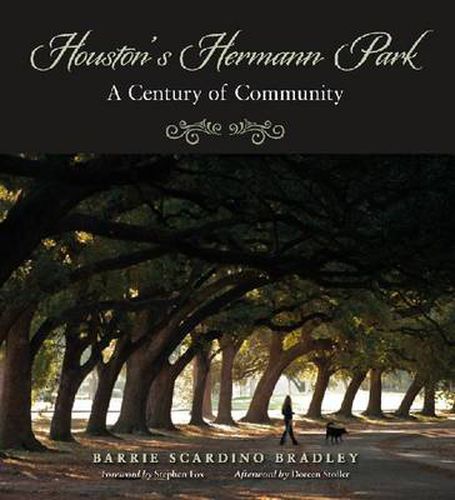Readings Newsletter
Become a Readings Member to make your shopping experience even easier.
Sign in or sign up for free!
You’re not far away from qualifying for FREE standard shipping within Australia
You’ve qualified for FREE standard shipping within Australia
The cart is loading…






Richly illustrated with rare period photographs, Houston’s Hermann Park: A Century of Community provides a vivid history of Houston’s oldest and most important urban park. Author and historian Barrie Scardino Bradley sets Hermann Park in both a local and a national context as this grand park celebrates its centennial at the culmination of a remarkable twenty-year rejuvenation.
As Bradley shows, Houston’s development as a major American city may be traced in the outlines of the park’s history. During the early nineteenth century, Houston leaders were most interested in commercial development and connecting the city via water and rail to markets beyond its immediate area. They apparently felt no need to set aside public recreational space, nor was there any city-owned property that could be so developed.
By 1910, however, Houston leaders were well aware that almost every major American city had an urban park patterned after New York’s Central Park. By the time the City Beautiful Movement and its overarching Progressive Movement reached the consciousness of Houstonians, Central Park’s designer, Frederick Law Olmsted, had died, but his ideals had not. Local advocates of the City Beautiful Movement, like their counterparts elsewhere, hoped to utilize political and economic power to create a beautiful, spacious, and orderly city. Subsequent planning by the renowned landscape architect and planner George Kessler envisioned a park that would anchor a system of open spaces in Houston. From that groundwork, in May 1914, George Hermann publicly announced his donation of 285 acres to the City of Houston for a municipal park.
Bradley develops the events leading up to the establishment of Hermann Park, then charts how and why the park developed, including a discussion of institutions within the park such as the Houston Zoo, the Japanese Garden, and the Houston Museum of Natural Science. The book’s illustrations include plans, maps, and photographs both historic and recent that document the accomplishments of the Hermann Park Conservancy since its founding in 1992.
$9.00 standard shipping within Australia
FREE standard shipping within Australia for orders over $100.00
Express & International shipping calculated at checkout
Richly illustrated with rare period photographs, Houston’s Hermann Park: A Century of Community provides a vivid history of Houston’s oldest and most important urban park. Author and historian Barrie Scardino Bradley sets Hermann Park in both a local and a national context as this grand park celebrates its centennial at the culmination of a remarkable twenty-year rejuvenation.
As Bradley shows, Houston’s development as a major American city may be traced in the outlines of the park’s history. During the early nineteenth century, Houston leaders were most interested in commercial development and connecting the city via water and rail to markets beyond its immediate area. They apparently felt no need to set aside public recreational space, nor was there any city-owned property that could be so developed.
By 1910, however, Houston leaders were well aware that almost every major American city had an urban park patterned after New York’s Central Park. By the time the City Beautiful Movement and its overarching Progressive Movement reached the consciousness of Houstonians, Central Park’s designer, Frederick Law Olmsted, had died, but his ideals had not. Local advocates of the City Beautiful Movement, like their counterparts elsewhere, hoped to utilize political and economic power to create a beautiful, spacious, and orderly city. Subsequent planning by the renowned landscape architect and planner George Kessler envisioned a park that would anchor a system of open spaces in Houston. From that groundwork, in May 1914, George Hermann publicly announced his donation of 285 acres to the City of Houston for a municipal park.
Bradley develops the events leading up to the establishment of Hermann Park, then charts how and why the park developed, including a discussion of institutions within the park such as the Houston Zoo, the Japanese Garden, and the Houston Museum of Natural Science. The book’s illustrations include plans, maps, and photographs both historic and recent that document the accomplishments of the Hermann Park Conservancy since its founding in 1992.